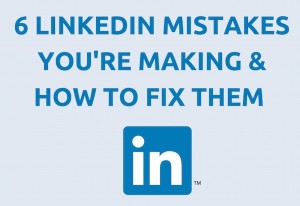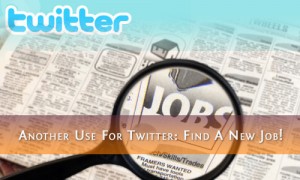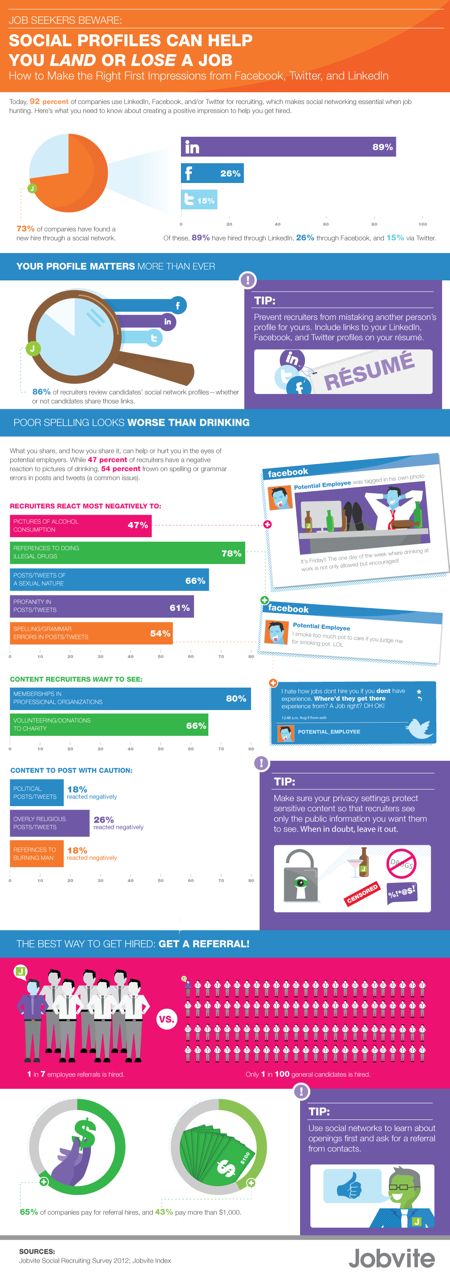By Alexandra Skuba
Although your LinkedIn profile may seem like simply your digital resume, it is way more than that. Your resume is fairly limited in scope, while LinkedIn works to paint a complete picture of your career, accomplishments and ambitions. But before you start making connections on LinkedIn, you need to make your profile visible and attractive to job seekers, employers and potential customers. Take a look and see if your profile contains these five big mistakes.
-
Your profile pic is non-existent.
Or your profile pic is you and a friend at Thursday night’s party. Or it’s a great sunset moment of you and your significant other. Or it’s you with a cuddly pet or baby. Your profile pic should not be any of these things. But you should definitely have a photo of yourself. Don’t lie about your age or crop out the person standing to your left. Just keep it honest; keep it simple. A professional profile picture gives you credibility (and your profile gets a lot more views). (5 Reasons Your LinkedIn Profile Photo Matters)
-
Your headline is your current job title and employer.
Hint: That’s the default. Another hint: You can change it. Be creative here, cater to the audience you want to attract, use key words. Answer the question, What’s special about me? Your headline should include three or four keywords that represent what you do and the outcomes you achieve. Need some inspiration? Here are a few real headlines that grab attention.
- Executive Recruiter/Speaker/Author/who helps you create a better career. Featured on Fox/CBS/CNN
- Introductions, Relationship Building, Market Research and Lead Generation for Entrepreneurs
- Fundraising consultant who helps major nonprofits raise more money. Clients include the Red Cross and YMCA.
-
Your summary is blank.
Many experts say the summary is the most important part of your LinkedIn profile. Your summary should not be a bulleted list reiterating what you’ve already filled in for your work experience. Make your summary conversational and professional; tell your readers a little bit about yourself. Use the first person, and feel free to let your creativity shine through! Your summary is like your cover letter: It’s your opportunity to expound upon what you stated in your resume.
-
You don’t have your contact information clearly visible.
This is a glaring mistake, if I ever heard one. You’re on LinkedIn; you want people to connect with you! Don’t be elusive. Make it easy for others to get in touch with you. Your contact info should be in several places. First, it should be in the top box of your profile. Second, you should include it again at the bottom of your summary. Finally, you should include your contact info in the “Additional Info” box toward the bottom of your profile so recruiters and clients won’t have to scroll back up to the top to get your information.
-
Your skills don’t show up in the LinkedIn dropdown menu.
You may be fantastic at “creative planking” or “tiddlywinks” but if the LinkedIn skill database doesn’t recognize this as a skill, consider it nil. It’s not going to help your case or help others connect with you if LinkedIn doesn’t know what you’re talking about. People won’t endorse your skills if they (technically) don’t exist. Remember to add skills that are keywords, skills that are both broad and specific. This will help you show up in search results.
-
You’re still using the generic URL you got when you signed up.
Customize your profile URL! This may seem like a small detail, but it means a lot. Customizing your URL means that you’re serious about your online presence and that you’re serious about communicating with clients and/or employers. So, instead of keeping the default URL, click on “Update your public profile settings” and then on “Create your custom URL” on the right hand sidebar. Change the URL to your full name, such as, http://linkedin.com/in/johndoe.
With these quick changes, you can get rid of the mistakes and polish your profile to perfection. LinkedIn is a great place to list your career accomplishments, but it’s also a great place to showcase your overall professional persona. Don’t underestimate the power of LinkedIn; take advantage of all the benefits this website offers! Make your LinkedIn profile a three dimensional portfolio of what you can do.
Want more LinkedIn tips? Check out “7 Tips to Build Your Best Brand on LinkedIn.”
Alexandra Skuba, a editorial intern at Leimkuehler Media, is pursuing a degree in English and History at Christendom College.





